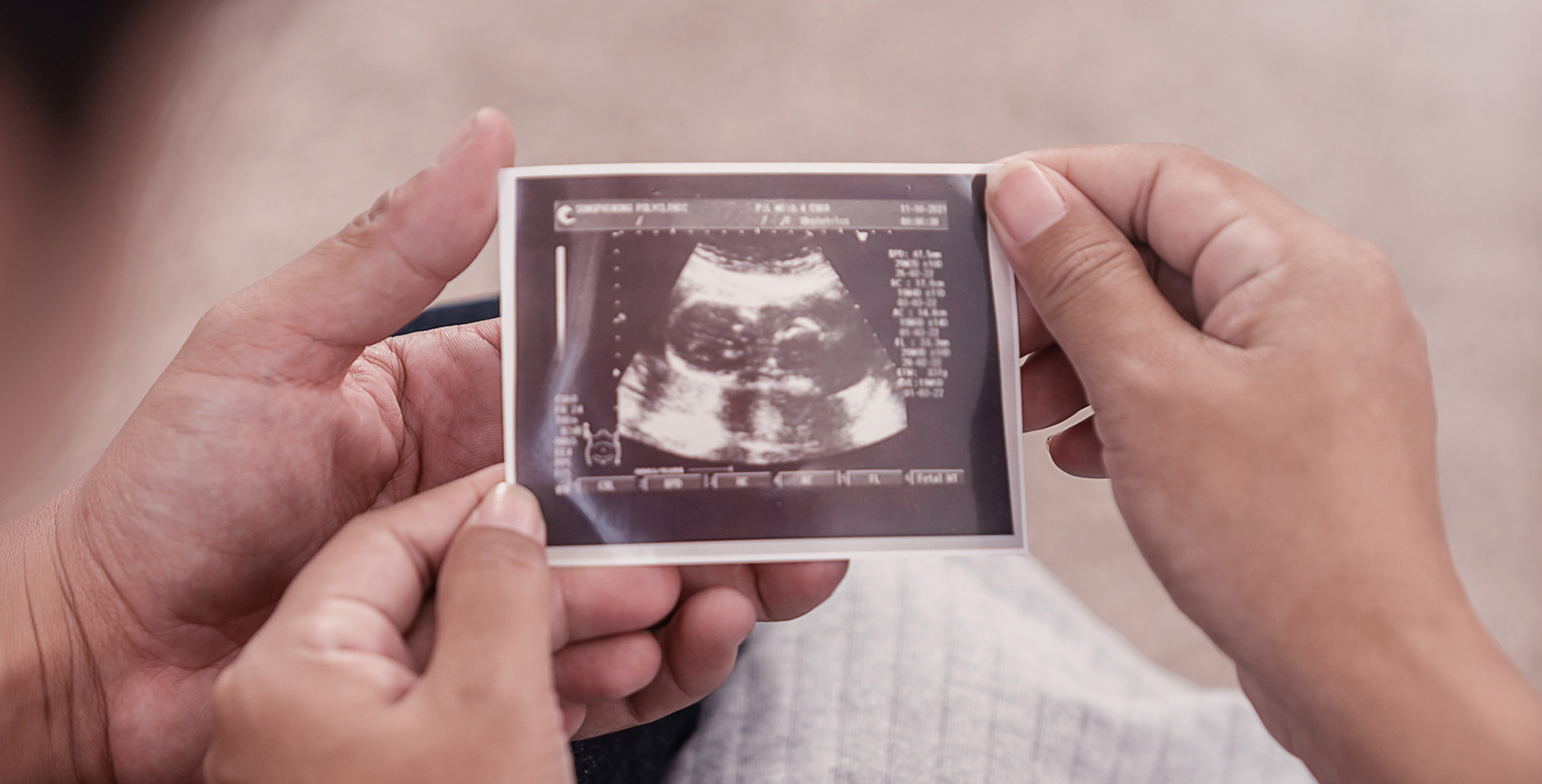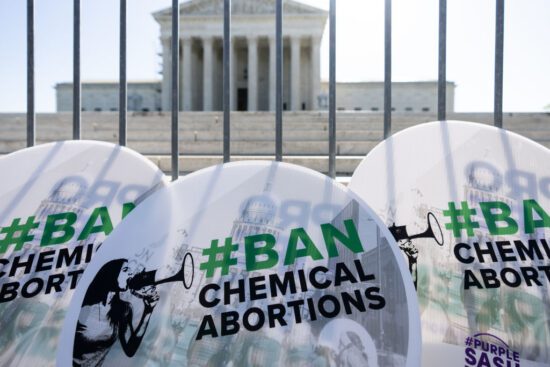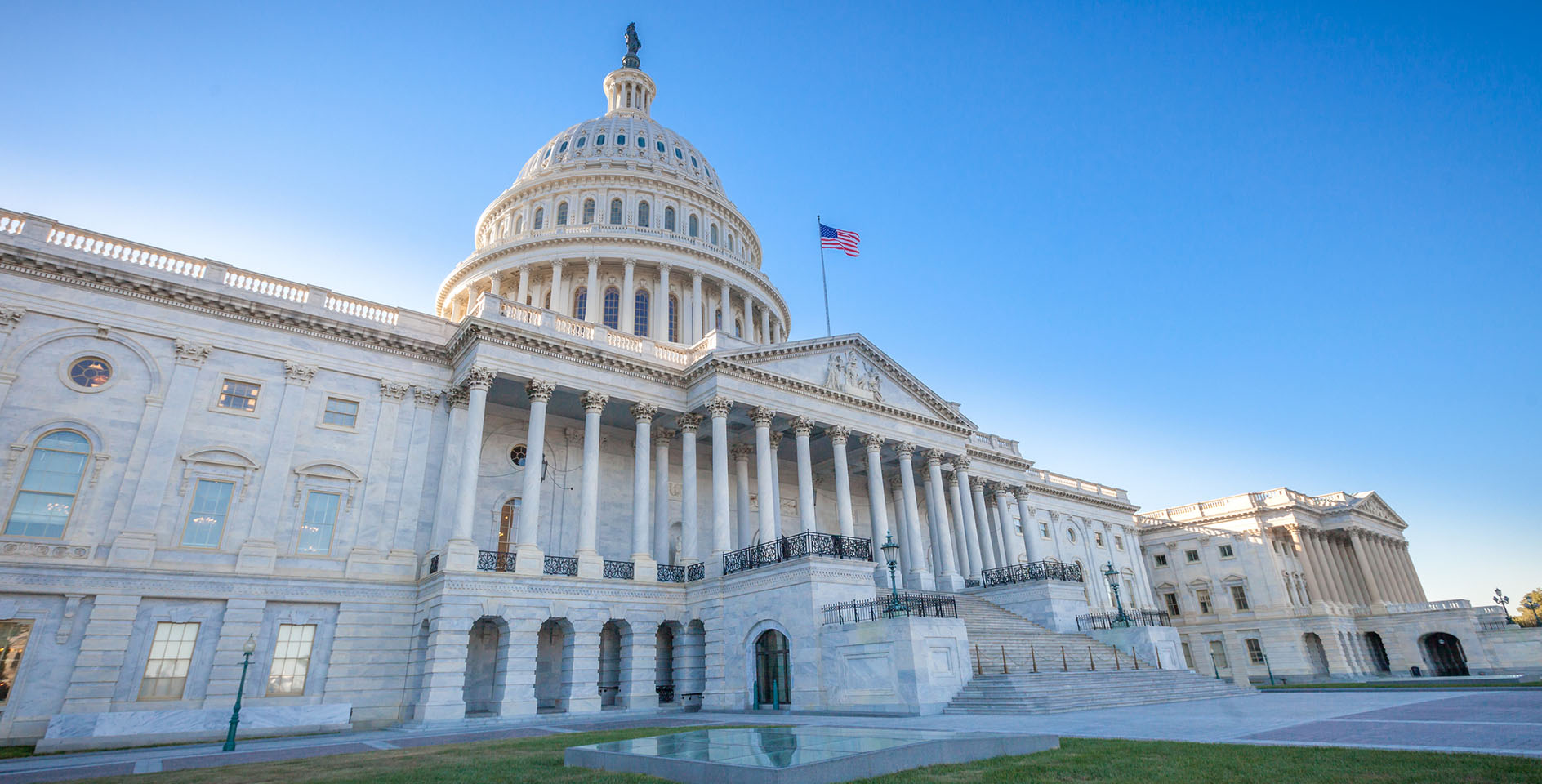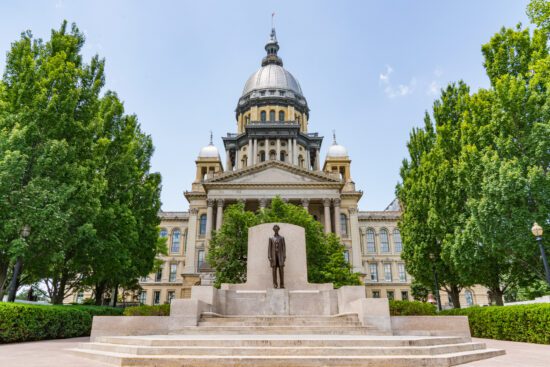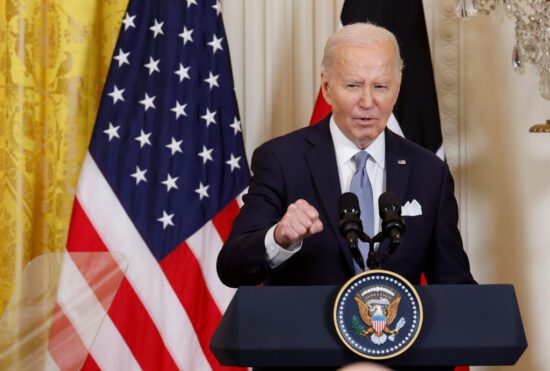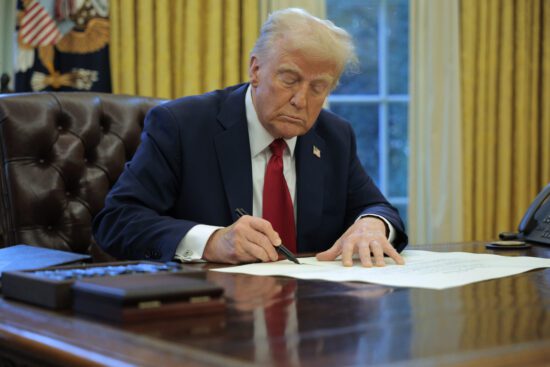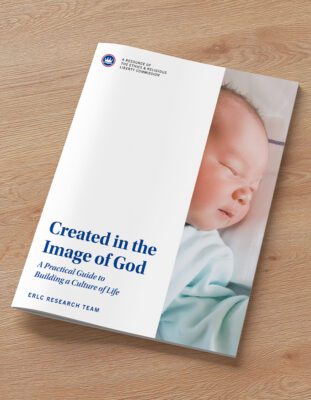The Dobbs v. Jackson Women’s Health Organization decision in the summer of 2022 was a watershed moment in the pro-life movement. It overturned the deadly precedent in Roe v. Wade and Planned Parenthood v. Casey. The decision also revealed where many in both the pro-life and pro-choice movement really stood on the issue of abortion. Following the court’s decision, social and traditional media were filled with cries of an out-of-control supermajority on the court who were upending essential elements of contemporary American life. These critics saw in the decision a questioning of the foundational legal principles lying underneath the lies of the sexual revolution.1For more on the connections between abortion and the banner of moral autonomy in contemporary society, see Jason Thacker, “Why Roe Is About More than Just Abortion: Individualism, Moral Autonomy, and the Sexual Revolution,” ERLC, July 21, 2022, https://erlc.com/resource-library/articles/why-roe-is-about-more-than-just-abortion/.
Both Roe and Dobbs revealed a key feature of law and policy: no law is truly neutral, for each one promotes some vision of the good, true, and beautiful.2This is a key component of a virtue-based understanding of justice and law as articulated by many in the Western philosophical tradition including Aristotle. See Politics, 1252a1. The question isn’t if someone’s vision of the good life is being promoted, but which one and by whom. As political philosopher Robert P. George has noted, the law taught for almost 50 years that abortion was morally good (in at least some circumstances) and that the human being in the womb was of lesser value (or of no real value at all) than the woman carrying the child. These laws did not simply regulate behavior but also promoted a particular vision of the good life in contemporary society centered on moral autonomy. Changes to public perception of abortion did not (and do not) take place overnight in either direction. In the weeks and months that followed the summer of 2022, many states immediately passed abortion restrictions, and others vastly expanded access. Every ballot initiative intended to restrict the practice failed, even in traditionally pro-life regions of the United States, which should come as no surprise given the nature of law to teach and not just restrain. Generations were raised being told that the ethic of “my body, my choice” was not only true, but good and requisite for true human flourishing.
Alongside these realities, one of the most disturbing revelations was the dissonance between how politicians and elected officials campaigned and then reacted. Many politicians and elected officials—at both the state and federal level—campaigned on being solidly pro-life and vowed to do everything in their power to reign in the abortion industry and overturn Roe. After the Dobbs decision was handed down, many seemingly became de facto pro-choice advocates as public support for limited access to abortion and some dehumanizing reproductive technologies grew in prominence. Many of these self-described pro-life officials either hid behind Roe, imbibing an essentially pro-choice line of reasoning for the good of moral autonomy and individual freedom, or simply got cold feet when the proverbial rubber hit the road. The Christian pro-life message of the dignity and value of every human being—no matter their stage of development or location—quickly became for some nothing more than a bastardized phrase co-opted to gain votes and/or a public platform.
No matter the circumstances, the Dobbs decision was a watershed verdict of just where many stand on the life-or-death choices surrounding the practice of abortion. As Christians engaged in both public and private pro-life advocacy—whether in our own churches, counseling rooms, abortion clinics, or the voting booth—we must double down on our commitment to being holistically pro-life and push past simplistic understandings of the present situation. Now is the time for pro-life advocates, Christian leaders in particular, to stand on principle and take meaningful action rather than rely on pithy phrases to conjure electoral support for a particular team or to tear down the proverbial “other” in society. In short, we need to understand the cultural space around us (shaped as it is by moral autonomy and radical individualism) and connect our advocacy for pro-life issues to the other questions of bioethics and human flourishing which can never be decoupled from the abortion issue. Creating a true culture of life won’t happen overnight, and it won’t be easy.
Moving past talking points
Law professor Kate Greasley, a staunch supporter and advocate of abortion rights, notes that one of the reasons that discussing the ethics of abortion today is so fraught with debate and division is that “attitudes on abortion rarely exist in a vacuum … they are tied up with a wider set of beliefs or worldview.”3Kate Greasley and Christopher Kaczor, Abortion Rights: For and Against (Cambridge: Cambridge University Press, 2018), 1. This is true on at least two fronts. First, she is undoubtedly correct that the questions related to abortion are inextricably tied to deeper, more fundamental questions of personhood, sexuality, marriage, and the common good. She notes that for many, their attitudes toward abortion are “inextricably linked to their views of legitimate sexual relations, traditional notions of the family, or the belief that all humans are made in the image of God.”4Greasley and Kaczor, 1. This means that for both sides of this debate we cannot take the question of abortion and isolate it as a singular issue, removing it not only from a distinct vision of human flourishing but also from the context of other related issues and orienting beliefs.
Second, Greasley is correct that the rationale for abortion access in America is routinely tied to other moral questions relating to personal autonomy and our responsibility to others. As I have argued elsewhere, abortion became sacrosanct for many in our society because it represented the longer trajectory of a modern understanding of the individual as the sole arbiter of truth. In this framework, the “self” is the one who ultimately determines the good for both the individual and society at large.5Thacker, “Why Roe Is About More than Just Abortion.” Thus, arguments often devolve to debates about “my body” and “my choice” disconnected from what we owe to others and what moral claims they have on us. This rather simple reframing—from what I owe to others, including the most vulnerable in the womb, to what I alone desire or deem worthy—has profound implications for the question of abortion. If we fail to see how abortion is related to a larger worldview, we will either fail to honestly engage our neighbors or unintentionally default to simplistic talking points isolated from the fuller context and depth of the debate.
Our language matters
One of the intellectual virtues that is crucial for robust and meaningful engagement in the public square today is epistemic humility. Epistemic humility can be described as a responsive awareness to the things we know and the things we do not know. Cultivating this type of humility does not mean that we compromise on our deeply held beliefs at all, but rather we acknowledge that the way we carry ourselves and the language we use matters. This is especially important in the abortion debate as advocates on both sides often reduce the conversation down to a few trite talking points and caricature their opponents’ views in order to score points on the other team. This can be seen in the use of terminology such as pro-life and pro-choice in comparison to anti-abortion/anti-choice and pro-abortion. Philosopher Christopher Kaczor notes that this loaded language “needlessly inflames or conceals.”6Christopher Kaczor, The Ethics of Abortion: Women’s Rights, Human Life, and the Question of Justice, Third edition, Routledge Annals of Bioethics (New York London: Routledge, 2023), 7. This type of language often frames one’s own position as normative and the other as dangerous, dehumanizing, and completely out of bounds for actual and thoughtful engagement.
I am a staunch pro-life advocate and defender of the preborn, who firmly believes that the practice of abortion is morally evil and that it is deeply dehumanizing to the mother, preborn, and larger society. Epistemic humility though calls us to recognize that not all who support abortion rights proudly cheer for abortion as much as they advocate for a particular view of choice, liberty, and freedom for women in these situations. It is true that some abortion advocates today openly cheer for and even celebrate the killing of preborn human beings, but most pro-choice advocates will acknowledge that this is a difficult situation and not something to be pursued unless they deem it as necessary for particular reasons.7As sociologists at Notre Dame found, few see abortion as a positive event or something they want to see increase. Supporters may desire that the practice be legal and available, but they did not see its use as something to be desired, but at best a necessary evil to alleviate other issues for women. See, Tricia Bruce, How Americans See Abortions: A Comprehensive Interview Study of Abortion Attitudes in the U.S. (Notre Dame, IN: McGrath Institute for Church Life), 2020. As Kaczor notes, “pro-life advocates are obviously not opposed to all choices, all liberties, and all freedom…” just as “the most ardent pro-choice advocate is ‘anti-choice’ about any number of things (e.g., bombing abortion clinics, withdrawing family planning funding, and rape).”8Kaczor, 7. Recognizing the loaded nature of the language in this debate can aid in pursuing more “civil and reasoned dialogue” over such a fraught subject as it allows advocates for each view to present their argument on their own terms which we can engage with a humble and charitable posture.
For integrity’s sake, we must represent the views of others truthfully and clarify the underlying fundamental questions at stake if we are to have any hope of persuading others of what we believe and changing the narrative of the abortion debate. Both sides will wish to distance themselves from the extremes, hoping to articulate their own vision of the good. For pro-life advocates, we ought not resort to caricatures or “nut-picking,” instead facing the opponent who is before us. We do not need to devolve to such rhetorical sophistry because we believe that the message we bear—that each person possesses intrinsic worth and dignity as a human being—can stand up to scrutiny before the toughest critic. Truth matters, and error alone needs outside support.
The fundamental question of moral personhood
Many pro-life advocates rightly recognize that the abortion debate often comes down to a particular question: is the preborn child actually a human being? At the core of, most if not all, contentious debates in society is this fundamental question of what it means to be human. In the abortion debate, we see this question framed often as asking if the fetus in the womb is truly human and thus deserving of our respect and protection. However, getting a pro-choice advocate to concede that the baby in the womb is a human being unfortunately may not carry the day. Christians in a post-Roe context must do much more than point to basic biology facts (the child possesses a heartbeat and unique DNA) or only draw attention to a handful of isolated Scripture passages (e.g., Gen. 1:26-28 or Ps. 139). One vital aspect of flipping the script in this debate is pursuing richer engagement with the robust biblical, theological, and philosophical principles that undergird our Christian pro-life ethic. This necessarily entails understanding and articulating reasoned and robust arguments for the dignity and inestimable value of every human being, no matter the stage of development or location.
Central to the contemporary abortion debate is not only a question of the humanity of the pre-born child per se but of their moral personhood and the corresponding duties on others to protect fetal life. Many of the most honest abortion defenders in recent generations have acknowledged the humanity of the pre-born child as a biological member of the human species. However, they have distinguished between simply being human and a moral person equally worthy of protection and care in all circumstances. The status or identity as “human being” in this framework does not automatically mean that one is a moral person as such, entitled to our equal respect, care, and protection.
To draw out the subtle distinctions in these arguments over humanity and moral personhood, many in philosophy employ thought experiments which are hypothetical situations not designed to be taken literally but used to draw out certain hidden beliefs and foundational principles. As political philosopher Michael Sandel notes writing about trolley problems, these types of scenarios are “imperfect guides to action.” But they help remove much of the uncertainty over the choices we confront in real life and are “useful devices for moral analysis.”9Sandel, Michael J. Justice: What’s the Right Thing to Do? New York: Farrar, Straus and Giroux, 2010, 24. Two of the most important arguments in moral philosophy about the underlying principles at play in the abortion debate are “The Violinist” and “The Embryo Rescue Case.”
One of the most influential arguments revealing the supposed tension between human status and moral personhood is by philosopher Judith Jarvis Thomson in her essay “A Defense of Abortion,” where she grants for the sake of argument that the baby in the womb is indeed a human being, and even a moral person, while arguing that the child does not have the right to intrude on the bodily autonomy of the woman.10Thomson, Judith Jarvis. “A Defense of Abortion.” Philosophy & Public Affairs 1, no. 1 (1971): 47–66. http://www.jstor.org/stable/2265091. She claims that the rights of the child as a moral person in this case should never prevail over the rights of the woman when those rights inevitably clash. Thomson uses an illustration to make her point: a world-famous violinist is connected by medical tubes and equipment to a woman without her consent, his life sustained by her circulatory system.
In this situation, Thomson believes that most people will assume that the woman is not required to remain hooked up to the violinist, even if he does possess intrinsic worth, dignity, and a right to life. It would be morally praiseworthy if she did so, but not morally required. Likewise, Thomson argues that it would be awfully nice of the woman to sustain the fetal life within her on good Samaritan grounds but that the woman is under no moral obligation to sustain the child with her own body. In this article, she does what few defenders of abortion seem to be willing to do, namely grant that the child in the womb is a moral person flowing from a common humanity.
Some pro-choice advocates will argue that many pro-life advocates are not even consistent on this question of moral personhood as argued in the “Embryo Rescue Case” (ERC). For the sake of argument, it is imagined that you are in a hospital that is burning down faced with a terrible decision. You see before you a cryogenic freezer that contains five human embryos in suspended animation and one fully formed human infant. You only have enough time to grab and rescue either the embryos or baby, but not both. What should you do?
In the ERC, Greasley notes that many would obviously choose to rescue the infant in the hospital ward and that this instinct is quite revealing about what one truly believes about the moral standing of the human embryos in danger. She writes, “if embryos are equal in moral standing to born human beings, then surely one would save the five of them rather than the one baby.”11Greasley and Kaczor, 28. But given that most would choose to save the infant, many pro-choice advocates see this as strong evidence that fetal life is not considered a human being with the same moral worth as born human beings. Earlier in her section of this work, Greasley acknowledges that the baby in the womb may indeed be a moral person, but one that does not have the same moral standing that “accord to born human beings, including, most importantly, the fundamental (if not absolute) right to life.” 12Greasley and Kaczor, 24.
Many pro-life advocates and moral philosophers have addressed these scenarios and offered pointed analyses of how a consistent pro-life ethic can address these dilemmas. In the case of the violinist argument, it has been pointed out that the case does not directly apply to the reality of the relationship between a mother and a child. 13For a more detailed analysis and critique of the violinist analogy, see Kaczor, 162-173. First, the situation seems to misrepresent the actual relationship of a mother and child in the womb given that the child is not a stranger but quite literally coming forth from the union of a man and woman as well as being grown inside the womb. Second, there is often a personal decision made by the woman to engage in sexual relations with another and the natural design of sex is procreation. Thus, a child is not an outside burden placed on the womb without her consent in most circumstances. Third, Thomson seems to make the argument that the child in the womb is in some ways parasitic, debilitating, harmful to the mother. But even in the most extreme circumstances of bedrest in pregnancy, a pregnancy does not follow the exact line of argumentation that Thomson puts forth. Most women do not experience “anything like the burden of the violist” as presented.14Kaczor, 185.
Similarly with the violinist analogy, the ERC as traditionally presented suffers from a handful of problems even though most agree that it is much stronger than the previous argument. Kaczor and others have argued that we do have “moral justification for treating human beings enjoying basic equal human rights in different ways,” especially in cases like that of saving the lives of national political leaders over that of a regular citizen.15Kaczor, 151. Prioritizing one life in this instance does not necessarily entail that one life is more intrinsically valuable or that one has a greater degree of moral personhood than the other. It is simply a recognition that time, resources, and opportunities are limited in the given situation, and one must make a decision even though the agent desires to save all lives given the equal moral standing and basic human rights involved. In philosophy, there is often a moral distinction made between one’s intended actions (what one does) and what one allows or foresees as a necessary outcome of a different decision.16For more on these distinctions, see Woollard, Fiona and Frances Howard-Snyder, “Doing vs. Allowing Harm”, The Stanford Encyclopedia of Philosophy (Winter 2022 Edition), Edward N. Zalta & Uri Nodelman (eds.), https://plato.stanford.edu/archives/win2022/entries/doing-allowing/ and McIntyre, Alison, “Doctrine of Double Effect”, The Stanford Encyclopedia of Philosophy (Winter 2023 Edition), Edward N. Zalta & Uri Nodelman (eds.), https://plato.stanford.edu/archives/win2023/entries/double-effect/.
While there is much more analysis needed in both scenarios and neither case seems to be as strong as abortion advocates may believe, they nevertheless reveal central questions that must be addressed by pro-life Christians in the ongoing debate between fetal life being biologically human and not moral persons (or at least not of equal moral value) in contemporary discourse over abortion.17Kaczor, 151. See also, George, Robert P., and Christopher O. Tollefsen. “Embryos and Five-Year-Olds: Whom to Rescue.” Public Discourse, October 19, 2017. https://www.thepublicdiscourse.com/2017/10/20332/.
Moving forward
While it might seem to some readers that these philosophical arguments are straining at gnats in an effort to prop up an ethic of abortion, they nevertheless represent some of the best forms of arguments for a pro-choice position which must be engaged by pro-life Christians as we push past simplistic talking points and engage the debate as it is, not just as we wish it was. The goal in this level of engagement is not to simply win an argument or gain some followers on social media, but rather to see meaningful change in society—both personally and legislatively. Yes, we must pursue meaningful legislative changes, but we must also engage the hearts and minds of those who have been raised on an ethic of expressive individualism and moral autonomy.
We must engage the best arguments of the day with biblical realities of the humanity of all people as made in God’s image, tell a better story than those around us, and love others with both truth and grace rather than simply seeking to score points on our political foes. As Paul reminds us in Ephesians 6:12, our battle is not against flesh and blood but against the principalities and power of evil in this age. True truth is not only logical, but also corresponds to reality as God created it. We do not need to prop up the truth with power or twist the arguments to be faithful to our calling to love God and love our neighbor as ourselves (Matt. 22:37-39).
Further reading:
- George, Robert P., and Christopher O. Tollefsen. Embryo: A Defense of Human Life. Second Edition. Princeton, NJ: Witherspoon Institute, 2011.
- Greasley, Kate, and Christopher Kaczor. Abortion Rights: For and Against. Cambridge: Cambridge University Press, 2018.
- Kaczor, Christopher. The Ethics of Abortion: Women’s Rights, Human Life, and the Question of Justice. Third edition. Routledge Annals of Bioethics. New York London: Routledge, 2023.
- Williams, Daniel K. Defenders of the Unborn: The Pro-Life Movement Before Roe v. Wade. New York: Oxford University Press, 2019.
- Ziegler, Mary. Roe: The History of a National Obsession. New Haven: Yale University Press, 2023.



